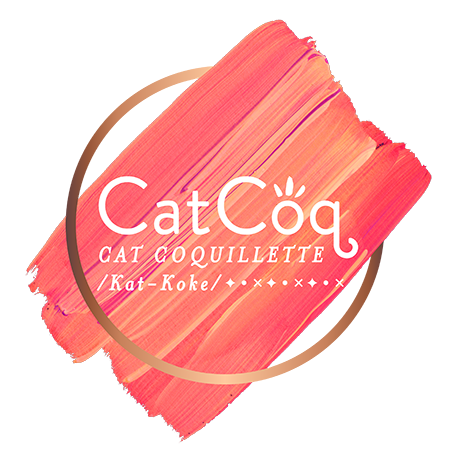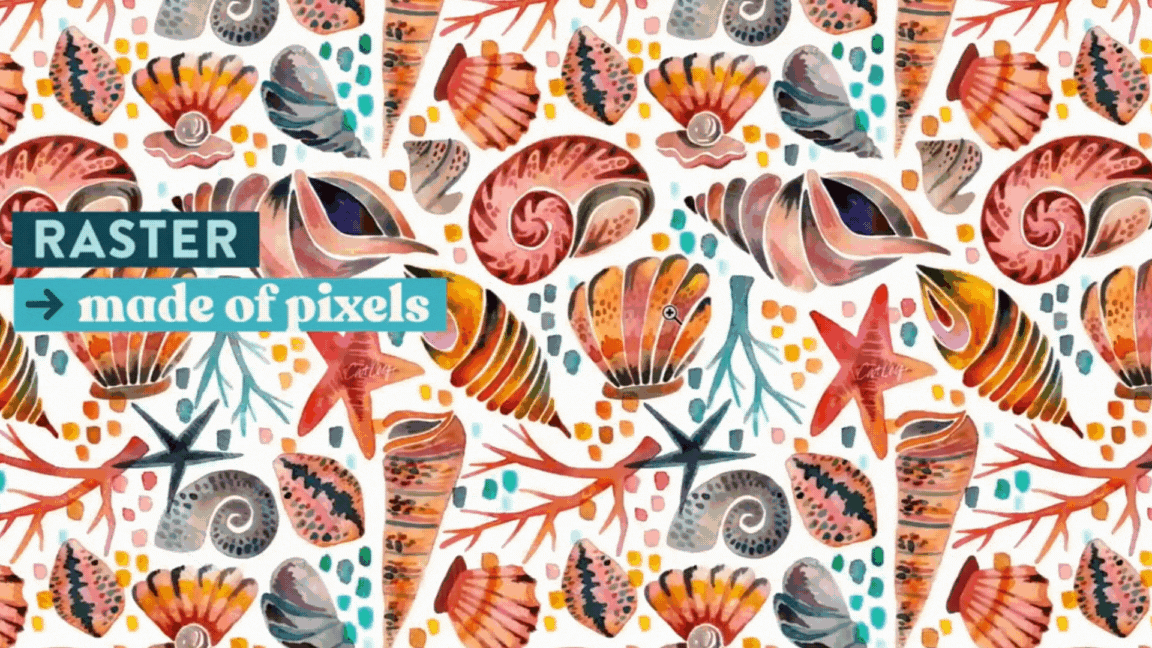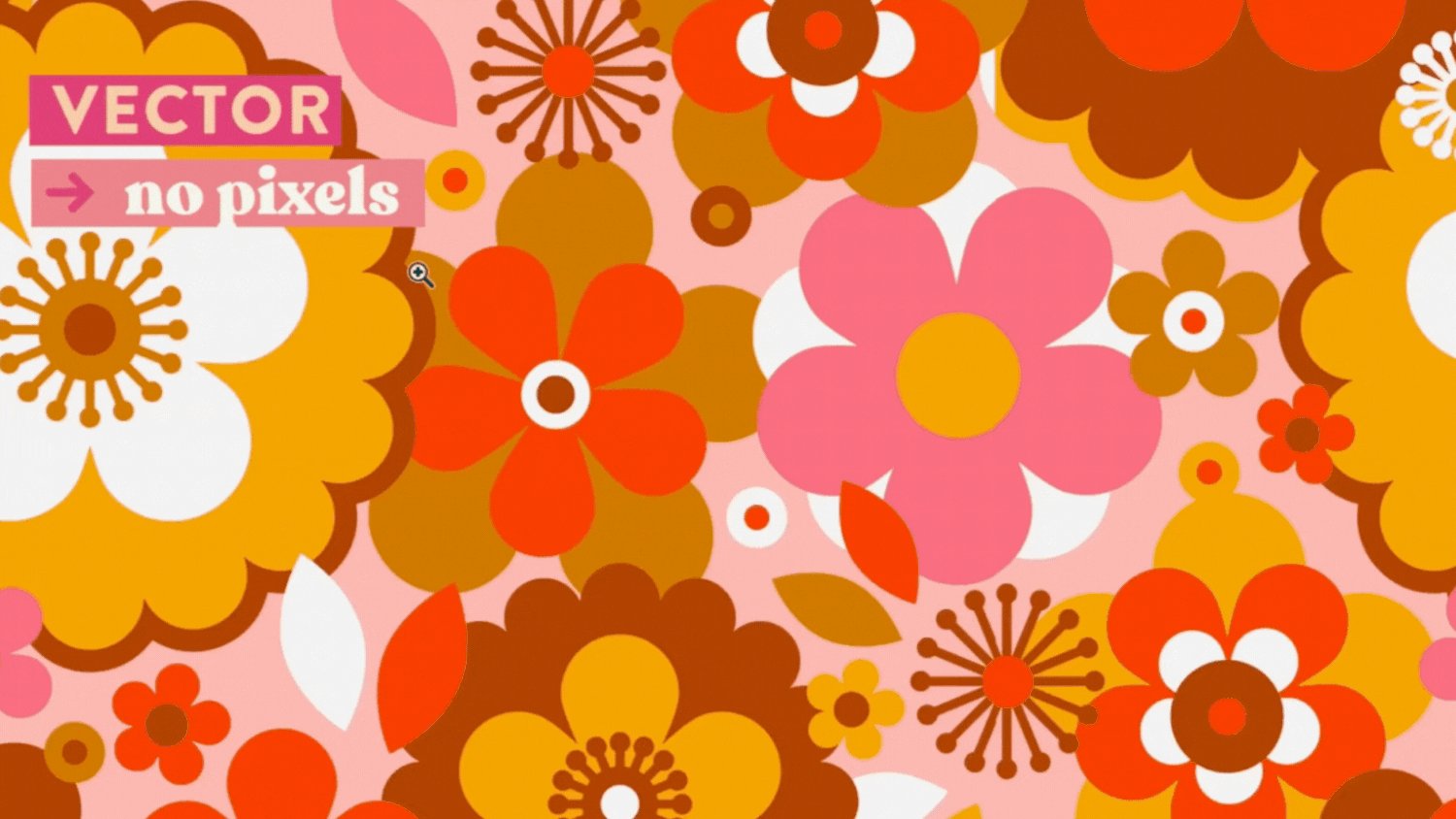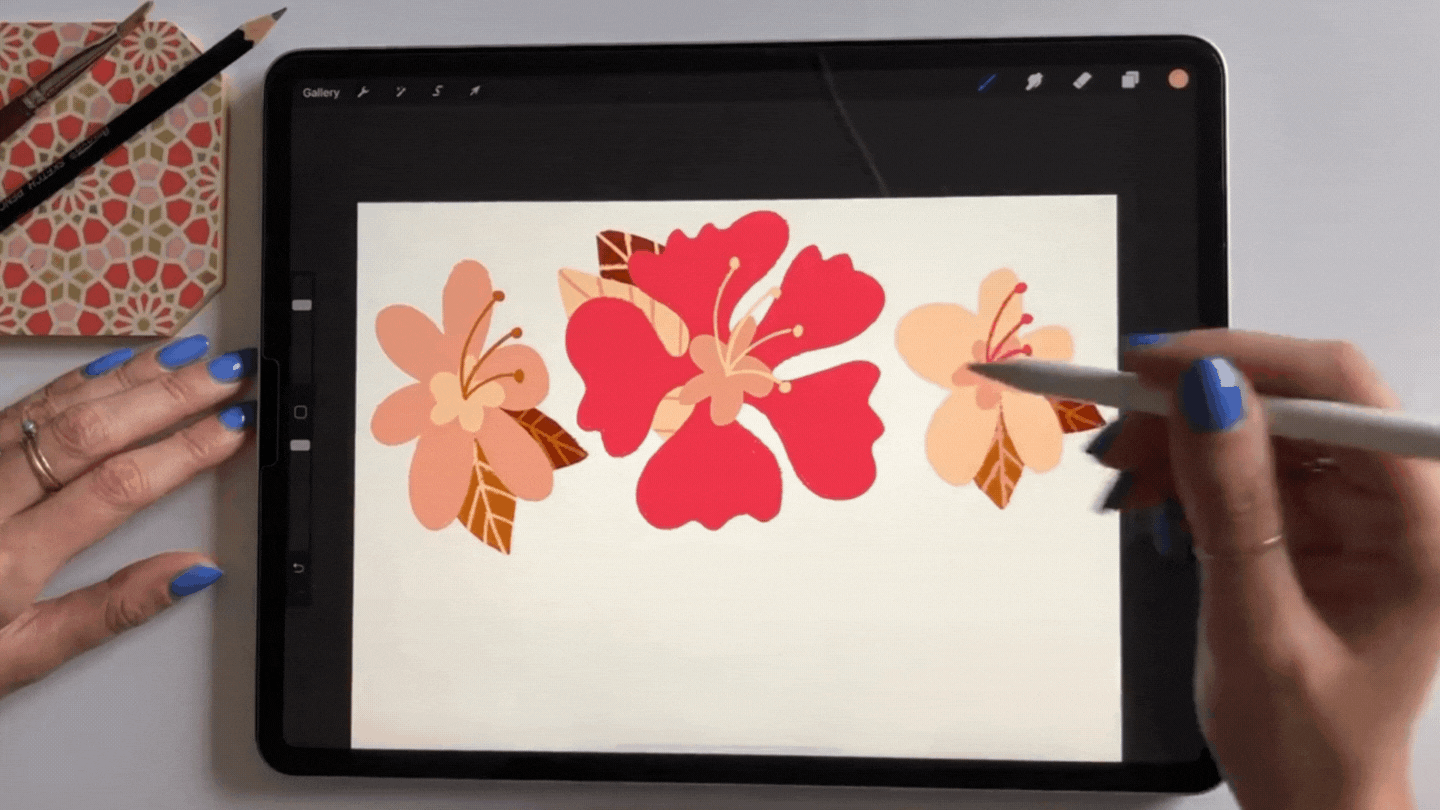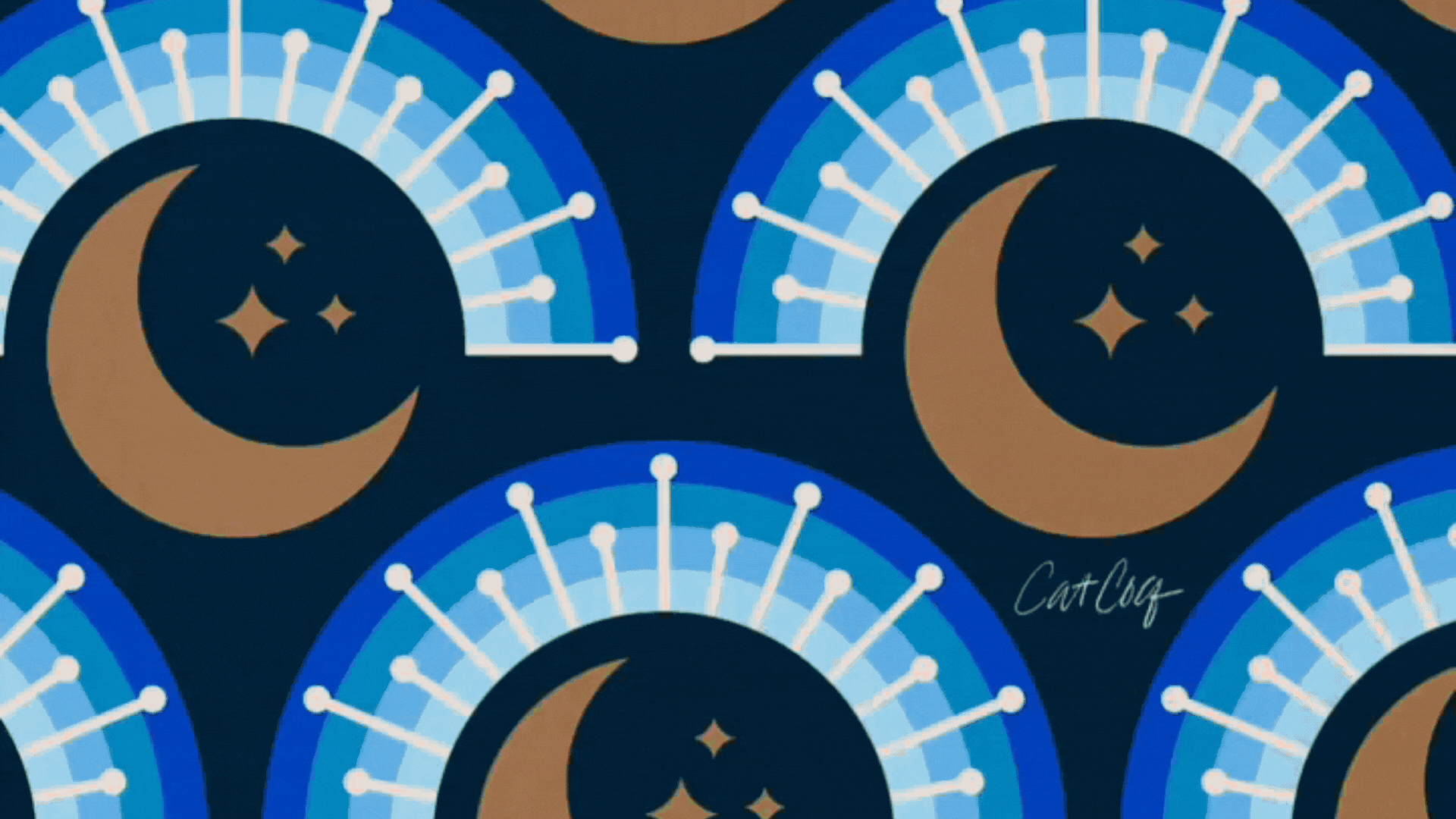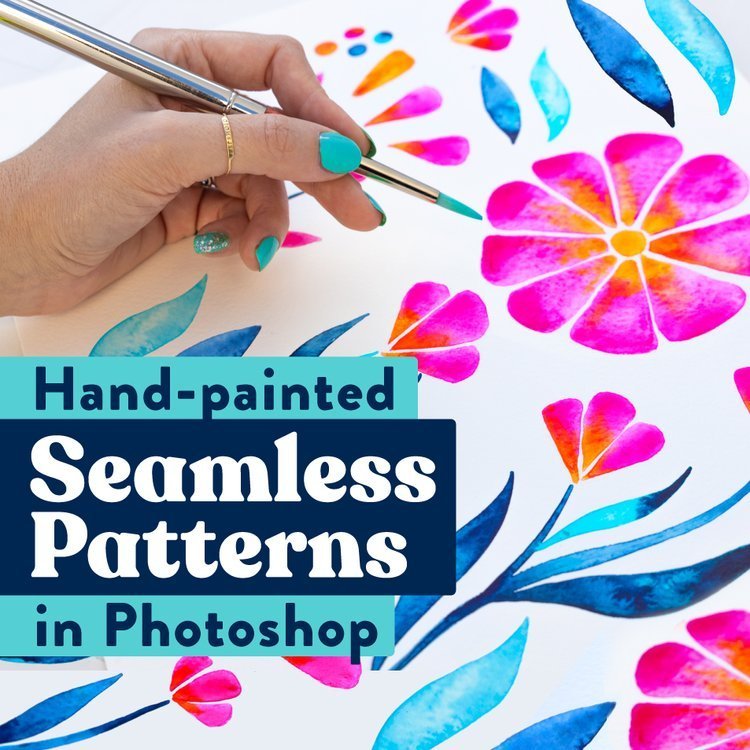Comparing Photoshop, Illustrator, and Procreate
Have you ever wondered when to use certain digital art tools like Procreate, Photoshop, and Adobe Illustrator? In this blog post, I’ll share the differences between each tool, when to use them, and how I use each one as a professional surface designer.
Choosing the Right Digital Art Tool: Procreate, Photoshop, or Illustrator?
Have you ever found yourself wondering which digital art tool to use for your creative projects? I know I have! The world of digital art is vast, and it can be overwhelming to decide when to use tools like Procreate, Photoshop, or Illustrator. Let’s dive into the differences between these tools, their specific use, and how to use them in your creative journey as a surface designer!
Difference Between Raster vs. Vector
First things first, let’s discuss the difference between Raster and Vector.
Raster files are images that are made up of pixels which means that there are a finite amount of pixels in the image therefore limiting your ability to scale up an image without losing quality.
On the other hand, vector files don’t use pixels to create the image. They use a series of mathematical equations to create lines, color, etc. meaning it can be scaled up infinitely without losing resolution!
In a nutshell, Procreate and Photoshop primarily work with raster files, while Illustrator operates with vector files.
Keep in mind that you don't always need vector files for professional surface design. Using Procreate and Photoshop is perfectly fine, as long as your file size allows for scalability without compromising resolution.
What is Photoshop Used For?
Now, let's talk about Photoshop, which is like the Swiss Army knife of digital art tools. Photoshop is renowned for its capabilities in editing raster files and enhancing photographs.
You can use it for a number of different things including the following:
Creating Repeat Patterns
Photoshop's powerful tools come to the rescue when I'm designing intricate repeat patterns. These patterns can be seamlessly tiled to cover large surfaces, making them ideal for surface design applications like textiles, wallpaper, or stationery.
Recoloring Artwork
Photoshop's extensive color correction and adjustment capabilities allow me to experiment with different color schemes for my artwork. This is invaluable for creating variations of a design to cater to different market preferences.
Digitizing Analog Illustrations
Often, I start my creative process with hand-drawn sketches or paintings. Photoshop comes into play for digitizing these analog creations, transforming them into versatile digital assets ready for further refinement or application.
Removing White Backgrounds
When working with scanned or photographed artwork, removing the white background is crucial to create graphics with transparent backgrounds. This makes the artwork more adaptable for use in various contexts, such as web design or on products like T-Shirts.
Pros of Using Photoshop
It is Remarkably Powerful
Photoshop is a powerhouse in image editing, providing a wide range of tools and features to enhance and manipulate artwork, making it a go-to choice for professional artists and designers.
It has a built-in Pattern Preview feature
Photoshop's Pattern Preview feature streamlines the creation of seamless patterns. Artists can visualize how patterns will repeat before finalizing them, saving time and ensuring flawless designs. I use this tool all the time as a professional surface designer. You can learn more about how to use Pattern Preview in this blog post!
It offers Layer Versatility
The ability to work with an unlimited number of layers in Photoshop offers unparalleled flexibility. Layers facilitate non-destructive editing, enabling artists to make changes without altering the original artwork.
Cons of Using Photoshop
It produces Non-Vectorized Files
Since Photoshop primarily deals with raster files, artwork created in Photoshop may not scale well without a loss of quality. This means that large file sizes are necessary for maintaining high-resolution output.
It has an intense Learning Curve
Due to its extensive feature set, Photoshop can be intimidating for beginners. Learning to harness its full potential may take time and practice.
My goal with my online classes is to make it as accessible as possible for beginners to learn Photoshop. If you want to learn how to use this powerful tool, check out my top rated Photoshop classes!
What is Procreate Used For?
Now, let's talk about Procreate, a digital painting app that's become a true artist's companion. It's incredibly user-friendly and designed for creating hand-drawn digital illustrations.
Procreate is a pretty powerful tool as well! You can use it for a number of different things including the following:
Crafting Standalone Illustrations
Procreate's intuitive interface and natural drawing experience make it my preferred tool when I want to create standalone illustrations. It's perfect for bringing my artistic vision to life.
Drawing Elements for Patterns
I often start creating pattern elements in Procreate due to its ease of use. Afterward, I transfer these elements to Photoshop for assembling and refining the complete pattern design.
Creating Art While Traveling
One of Procreate's standout features is its portability. Paired with an iPad and Apple Pencil, I can create artwork on the go, whether I'm on a plane, in a cafe, or anywhere inspiration strikes!
Pros of Procreate
It is User-Friendly
Procreate's user-friendly interface makes it accessible to artists of all skill levels. It's an excellent choice for beginners looking to dive into digital art.
It is Portable
The combination of Procreate, an iPad, and the Apple Pencil creates a highly portable digital art studio. Artists can carry their creative tools wherever they go.
The Apple Pencil
Procreate integrates seamlessly with the Apple Pencil, offering precise control and a natural drawing experience that mimics traditional art materials.
It requires No Cleanup
There's no need for messy cleanup with Procreate, making it a hassle-free choice for artists who prefer digital mediums.
Cons of Procreate
It has Layer Limitations
Procreate imposes a limit on the number of layers based on canvas size and the processing power of your iPad. This may restrict the complexity of certain artworks. Though you shouldn’t let this keep you from using it! It’s possible to create amazing artwork even with the strict Procreate layer limitations. Check out this blog post for my tips on working within the layer limits of Procreate.
It has Canvas Size Constraints
Depending on the power of your iPad, you may be limited to smaller canvas sizes, which can affect the level of detail you can achieve in your artwork.
It is not made for intense editing tasks
In my Procreate classes, I teach artists how to achieve the highest-quality artwork possible with Procreate. You absolutely can use this tool for professional surface design. Join me in one of my Procreate classes to learn how!
What is Illustrator Used For?
Lastly, let's explore Adobe Illustrator, a vector-based design software tailored for creating scalable and precise illustrations and graphics.
You can use it for things like:
Crafting Clean, Digital-Looking Artwork
Illustrator's vector-based nature allows me to create artwork with precise lines and shapes. This results in crisp and clean digital designs, which are especially valuable for certain design projects.
Pros of Illustrator
It is Vector-Based
Illustrator's vector format ensures that artwork can be scaled up infinitely without losing resolution. This is particularly useful for projects requiring large-format prints or graphics.
It produces Clean Artwork
The precise nature of vector graphics results in exceptionally clean and sharp artwork, devoid of pixelation or jagged edges.
Cons of Illustrator
It’s Learning Curve
Similar to Photoshop, Illustrator can be complex, and mastering its tools and features may take time and practice.
Vectorization
While vectorization offers precision, it may strip away some of the organic, hand-drawn qualities that can be achieved with raster files. This trade-off may not be suitable for all artistic styles.
As you can see, each of these digital art tools has its own strengths and is well-suited for different tasks. The choice ultimately depends on your unique creative needs and preferences. Whether it's the versatility of Photoshop, the convenience of Procreate, or the precision of Illustrator, the best tool for you is the one that empowers your artistic vision. Experiment, explore, and harness the power of these tools to bring your creative ideas to life.
When it comes down to it, I use all of these tools for different things. You don’t have to use a specific tool to be successful in surface design. Use what you want to use!
However, if you’re looking to learn a new tool so you can level-up your illustrations, I’d recommend starting with Photoshop! It’s such a powerful tool, and I love using it for creating raster-based seamless patterns.
Want to learn more about how to create professional surface pattern designs with hand-drawn raster files? Check out my class, Seamless Patterns in Photoshop.
